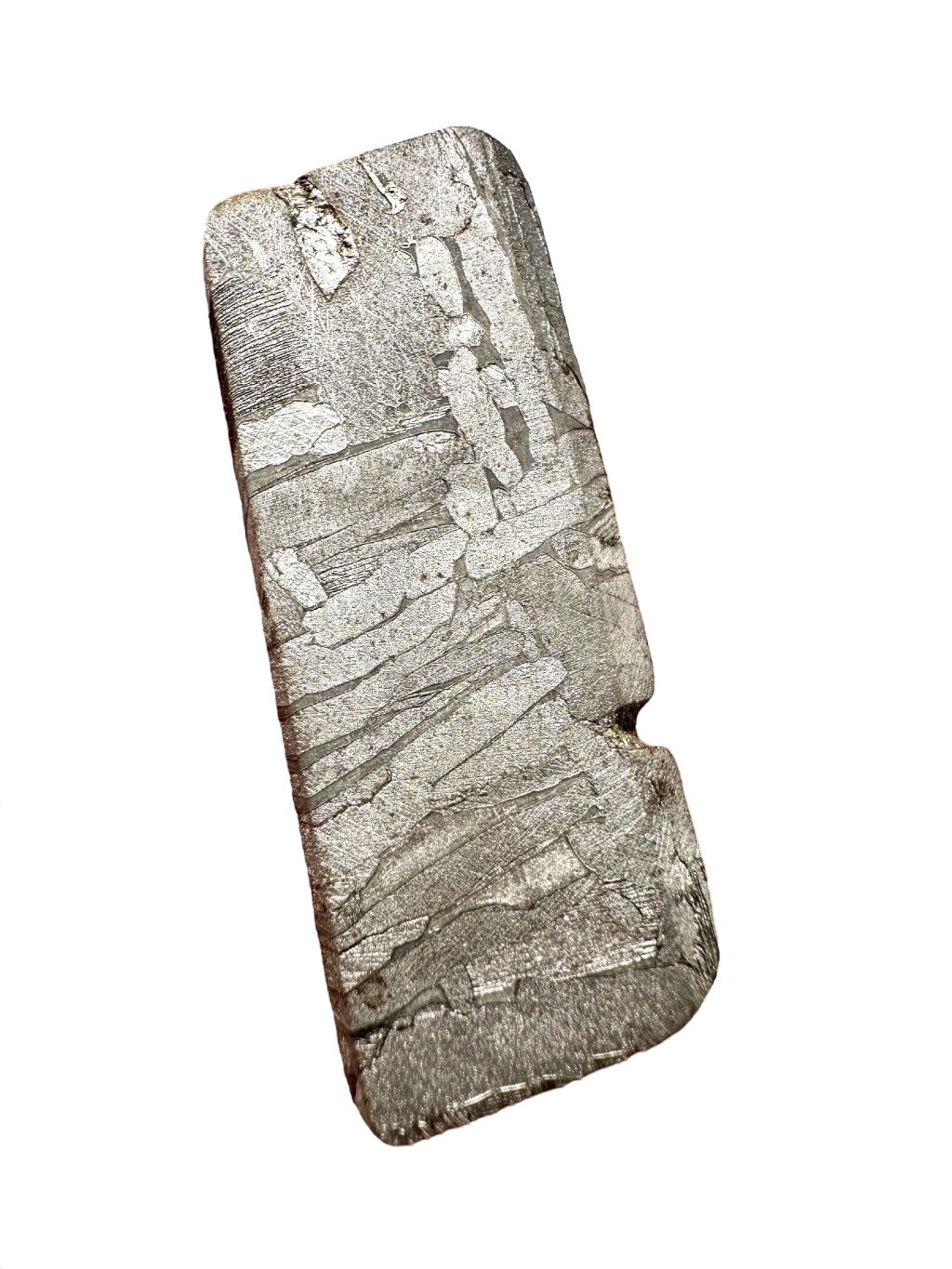Meteorite Seymchan – Magadan, Russia
Type: Pallasite
Locality: Magadan, Russia
Weight: 18,7g
Dimensions: 4,7 x 3,8 x 0,2 cm
Year found: 1967
Total known weight: 323,3 kg
Surface treatment: cut, polished slice
| Category: | Seymchan |
|---|---|
| By name: | Seymchan |
| ? Type: | Stony-iron |
| ? Surface treatment: | Cut |
| Packaging: | None |
This meteorite (pallasite) fell in the Magadan region, near the settlement of Seymchan in Russia, but the date of the fall is unknown. It was discovered in 1967, with the first piece weighing 272 kg discovered in June of that year and the second piece weighing 51 kg in October, just a few months later. Initial examination only discovered the metallic parts of the meteorite and it was only in 2004, during a survey, that 20% of the sample was found to contain olivine crystals and they were able to classify it as a Pallasite.
Structure
Seymchan has a very unusual structure. Some parts are rich in olivine inclusions, these are referred to as pallasitic parts, while others consist almost entirely of iron-nickel alloys, notably kamacite and taenite. In the iron part of the meteorite the characteristic Widmanstätten patterns, which are produced by the slow cooling of the iron-nickel alloy in space, can be detected after polishing and etching with acid. In addition, Seymchan contains minerals such as troilite, schreibersite and chromite.
|
|
 |
| Pure metal part composed of kamacite and taenite | Pallasitic part with olivine inclusions |
And how did that come about?
Seymchan likely came from a differentiated asteroid from the asteroid belt, a region of the solar system between the orbits of Mars and Jupiter where many small bodies are found, meaning that this asteroid went through a process of melting and separating its various components. During this process, heavier elements such as iron and nickel separated from the lighter silicate minerals, resulting in a core composed mostly of metals and a mantle composed of silicate materials. During collisions and other dynamic processes that occurred after the formation of the differentiated asteroid, the metallic parts of the core may have been mixed with the silicate materials of the envelope. The result is a meteorite that contains both pure metallic parts and pallasitic parts (containing olivine).











